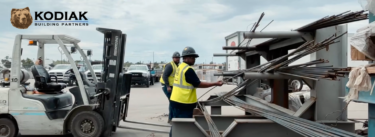I love this question. And that’s because I have learned that there is no limit to the “up”.
Lean, and certainly kaizen, are generally thought of as “continuous improvement.” But in a traditional batch company, if you brought everyone together one day and announced that you will be starting a “continuous improvement” program I can almost guarantee you that one of the first questions asked will be, “Gee boss, that’s great we can certainly benefit from that but when do you think we’ll be done? Two years? Three or four years? When?” After all that’s how we have all been trained. We believe that there is some ultimate best way to do everything and once we have achieved it we will be done. Said another way, we see kaizen as a noun (a fixed quantity of improvement) rather than a verb (a state of mind that propels people to deliver more value always). Hence the law of diminishing returns, or the constant hunt for “the next best thing.” This gives rise to “the program of the month” type of thinking that persists in many companies. When you get to that state, people just try to keep their heads down and hope the next “program of the month” can somehow miss them or at least not do too much damage.
The reality, as Toyota keeps proving after over 60 years of kaizen efforts, is quite different. There is always waste and therefore there is always opportunity for improvement. Any business is nothing more than a bunch of people and a collection of processes, trying to deliver value to a set of customers. Waste exists in all three legs of this stool and the reality is that the more that you remove the more you will be able to see how much is still left. In fact in my experience it takes even a good company practicing lean aggressively about four years, which by the way will have yielded outstanding results, to finally wake up and say, “Boy we have a mess here and are so excited about the opportunities to improve.”
Now as I’ve said many times lean is something that you can only learn by doing. This will always be true but in addition there is a lot to learn by seeing. In every lean conversion I have lead we conduct an annual trip to Japan to see “how high is up.” I started this when I was a Group Executive at The Danaher Corporation. Danaher only had 13 companies at the time. I and my counterpart, the other Group Executive, John Cosentino, basically ordered all of the 13 Division Presidents and their VPs of Operations to go to Japan for a week to visit about 8 companies that were well down the lean path. At the end of one plant visit, while thanking our hosts I asked how much inventory they had on hand in terms of raw, WIP and finished. They replied that the answer was just under one day. You could see this difference starkly when you went on the shop floor. When I told them that all of the companies that we brought had at least 73 days of inventory they were just shocked. They couldn’t believe anyone could be so wasteful. When we got back home we started what we called the Presidents Kaizen, where we took this whole group to one of our factories every 6 weeks for a three-day kaizen. There was a lot of grumbling at first (“I’m the President of a company why do I have to spend three days working on someone else shop floor?”), but the results were off the charts and pretty soon they didn’t want to miss these kaizen events.
We took a team to see a Toyota warehouse where the picking was done by size and time, not by order, in a smooth and efficient way. The company had a big sign posted that said 5:28. When we asked what this meant, we were told: “oh, we have to pick and ship all the orders before we go home and based on today’s orders we can go home at 5:28 pm.” They knew this because they understood the exact takt time for every pick. “But what happens if you have a very heavy order day?” we asked. “Well, we have trained all the office staff how to pick orders so we can put as many people as we need on the floor to make sure all the orders go out today.” Well, duh, that made sense.
We saw the gas tank manufacturer who received orders from Toyota on a printer at the end of the assembly line, four tanks at a time, never knowing the mix of models that would be in the next order of four. They made them, put them on a trailer and delivered the trailer line side to Toyota where a robot installed the gas tanks. When we asked the Toyota plant how long it was from when they knew what the next four tanks to order were (they only knew this when they came out of the painting operation) until the cars reached the robot that put them in the car they said two hours. The gas tank guy was 45 minutes away. Amazing!
We have seen many other examples but I think you get the point. There is no limit to how high is up. Continuous improvement really is continuous and it doesn’t hurt to go see just how far ahead of you the real lean companies are. More importantly, it’s okay to understand that if you came back in 6 months or a year you might not recognize the place because they would have moved further ahead. This is something that Taichii Ohno taught us all when he would invite his competitors into the Toyota factories. His people were horrified but he simply explained that it didn’t matter because by the time they copied what they saw he expected his team to have done a lot more kaizen and be way ahead. You need to think and behave the same way. When someone asks you, “How high is up?” you have to feel confident in answering that there is no limit to the up with lean.





